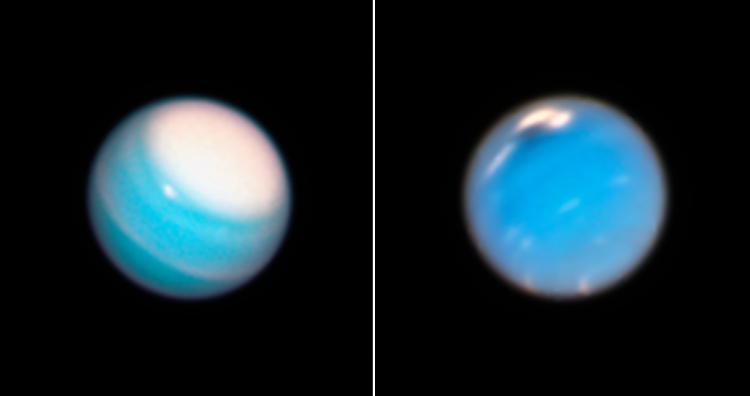We've known for long that Uranus and Neptune are two of the strangest planets in our solar system, but now things have gotten a lot weirder. Planetary scientists have found a way to study both planets' alien water.
A new study describes how researchers were able to design a theoretical computer model and used it to probe inside Uranus and Neptune. The team investigated the electrical and thermal conductivity of the alien water inside of these ice giants using the tool.
Scientists hope that by simulating these physical processes on a much smaller scale, the model will uncover the secrets that both planets have been hiding -- what's inside their icy bodies, how old they are, and how they evolved.
The researchers, a team of experts from the University of California at Los Angeles and the International School for Advanced Studies (SISSA) in Italy, have a reason to believe that it is water that makes up most of these planets and that Uranus may be hiding a frozen core, according to a statement from SISSA.
The team considered three different phases of water that could exist on the interiors of Uranus and Neptune: liquid, ice, and superionic, the latter being a type of water that exists at extremely high pressures and temperatures. They noted, however, that water on these planets is entirely different from our water here on Earth.
"In such exotic physical conditions, we cannot think of ice as we are used to," said SISSA researchers in the statement. "Even water is actually different, denser, with several molecules dissociated into positive and negative ions, thus carrying an electrical charge. Superionic water lies somewhere between the liquid and solid phases."
According to the research team, Uranus' non-luminous atmosphere stems from the possibility that its core could be frozen, and that its superionic water is more electrically conductive than here on our planet. The same thing goes for Neptune as well. As a matter of fact, these gas giants could be mostly made up of superionic water in its inner layers. The new findings add to our growing body of knowledge regarding two of our weirdest planets.
The authors of the study said that electrical and thermal conduction could say a lot about a planet's history, when and how it was formed, and its cooldown process. It is critical, therefore, that an analysis of the appropriate tools is performed, like the one they devised.
The study has been published in the journal Nature Communications.





